
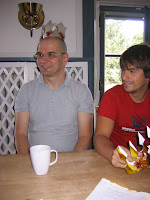


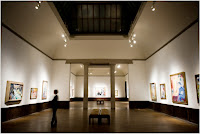
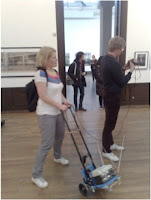
 On the 26th of May the project organized a Contiki programming tutorial where participants were introduced to the mysteries of sensor network programming. The tutorial was the second in a series of events aiming to build cross disciplinary understanding of the challenges associated with creating supple systems. The tutorial was held by Adam Dunkels from the Networked Embedded Systems (NES) group at SICS. It started with an overview of what sensor networks are, what they are used for, some of the problems associated with developing them, and what Contiki can do to overcome those problems. Contiki is an operating system for networked embedded systems and wireless sensor networks developed by Adam and his colleagues. It is highly efficient and is used in numerous applications and contexts worldwide. Contiki provides solutions to common problems, e.g. short battery life-time, encountered when developing battery powered wireless sensor networks through the use of techniques such as power saving MAC protocols. Based on the somewhat counter intuitive observation that listening for radio transmissions in sensor networks, is more expensive than transmitting radio, power saving MAC protocols can regulate the amount of time that the radio transceiver in sensor nodes spend listening for radio transmissions in clever ways.
On the 26th of May the project organized a Contiki programming tutorial where participants were introduced to the mysteries of sensor network programming. The tutorial was the second in a series of events aiming to build cross disciplinary understanding of the challenges associated with creating supple systems. The tutorial was held by Adam Dunkels from the Networked Embedded Systems (NES) group at SICS. It started with an overview of what sensor networks are, what they are used for, some of the problems associated with developing them, and what Contiki can do to overcome those problems. Contiki is an operating system for networked embedded systems and wireless sensor networks developed by Adam and his colleagues. It is highly efficient and is used in numerous applications and contexts worldwide. Contiki provides solutions to common problems, e.g. short battery life-time, encountered when developing battery powered wireless sensor networks through the use of techniques such as power saving MAC protocols. Based on the somewhat counter intuitive observation that listening for radio transmissions in sensor networks, is more expensive than transmitting radio, power saving MAC protocols can regulate the amount of time that the radio transceiver in sensor nodes spend listening for radio transmissions in clever ways. After the introduction we moved on to a hands on session where we installed the instant-contiki development environment and stepped through some examples illustrating how to program sensor nodes using contiki. In particular we focused on how to make nodes talk to each other using unicast, broadcast, and mesh communication. This all turned out to be easy enough and could be accomplished with just a few lines of code. By the end of the tutorial we had all gone through several examples and learnt enough to be able to take our first solo steps in the land of wireless sensor networks and embedded systems programming.
After the introduction we moved on to a hands on session where we installed the instant-contiki development environment and stepped through some examples illustrating how to program sensor nodes using contiki. In particular we focused on how to make nodes talk to each other using unicast, broadcast, and mesh communication. This all turned out to be easy enough and could be accomplished with just a few lines of code. By the end of the tutorial we had all gone through several examples and learnt enough to be able to take our first solo steps in the land of wireless sensor networks and embedded systems programming. Overall participants were surprised that using contiki was as easy as it was. They shouldn't be, as one of the design goals of contiki is to demystify the process of programming wireless sensor networks, allowing developers to use the same languages, tools, and constructs that they are used to. When developing prototypes in the supple project working with contiki will definitely make our lives easier.
Overall participants were surprised that using contiki was as easy as it was. They shouldn't be, as one of the design goals of contiki is to demystify the process of programming wireless sensor networks, allowing developers to use the same languages, tools, and constructs that they are used to. When developing prototypes in the supple project working with contiki will definitely make our lives easier. To do this start Parallels and run the parallels transporter which can be found under File -> Run Paralells Transporter.
To do this start Parallels and run the parallels transporter which can be found under File -> Run Paralells Transporter.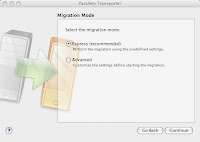 When asked to choose Migration mode stay with the default (express) mode which works fine unless you have specific wishes about how your VM should be configure.
When asked to choose Migration mode stay with the default (express) mode which works fine unless you have specific wishes about how your VM should be configure.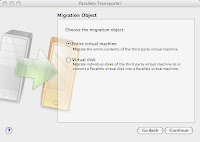 Choose "Entire virtual machine" unless you only wish to convert a disk image and hook it into an existing virtual machine that you have.
Choose "Entire virtual machine" unless you only wish to convert a disk image and hook it into an existing virtual machine that you have.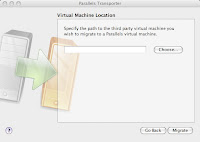 The virtual machine definition that you want to convert is in the "instant-contiki.vmx" file. Browse to the location where you unpacked the Instant Contiki archive and choose it. Continue the conversion process when that is done.
The virtual machine definition that you want to convert is in the "instant-contiki.vmx" file. Browse to the location where you unpacked the Instant Contiki archive and choose it. Continue the conversion process when that is done.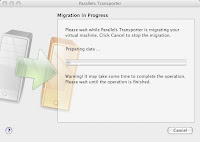 The conversion process will take a few minutes but once it is done you are ready to start Instant Contiki! Your newly converted VM will be added to your list of Virtual Machines. From there you can start it like any other VM you have.
The conversion process will take a few minutes but once it is done you are ready to start Instant Contiki! Your newly converted VM will be added to your list of Virtual Machines. From there you can start it like any other VM you have.
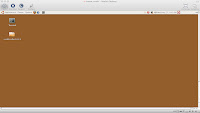 When the VM has booted you have a full linux installation and all necessary Contiki tools available. For more information about how to use those please refer to the Contiki site. Note that the Username/Password for logging on to the linux installation is user/user.
When the VM has booted you have a full linux installation and all necessary Contiki tools available. For more information about how to use those please refer to the Contiki site. Note that the Username/Password for logging on to the linux installation is user/user.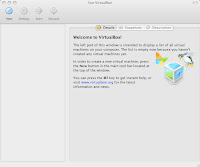 After starting VirtualBox click new to create a virtual machine for your instant contiki environment. In the following step just click next to continue to set up of the VM.
After starting VirtualBox click new to create a virtual machine for your instant contiki environment. In the following step just click next to continue to set up of the VM.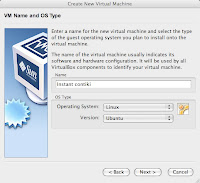 Give your VM a name, here I named it Instant contiki, and set the operating system to Linux and the version to Ubuntu. In the following step stay with the suggested default value for VM memory (384 MB in my case).
Give your VM a name, here I named it Instant contiki, and set the operating system to Linux and the version to Ubuntu. In the following step stay with the suggested default value for VM memory (384 MB in my case).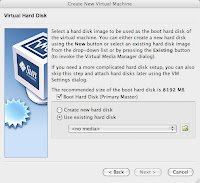 Choose use existing hard disk and click on the folder icon to the right of the drop down box to bring up the virtual media manager.
Choose use existing hard disk and click on the folder icon to the right of the drop down box to bring up the virtual media manager.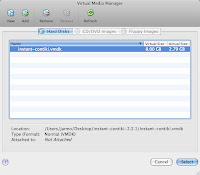 In the media manager click Add and navigate to the instant-contiki.vmdk file in the directory where you unpacked the instant contiki bundle. Once you are done your new virtual drive should appear in the list. Choose it and click the Select button. This brings you back to the Virtual Hard Disk dialog where you just click next to continue.
In the media manager click Add and navigate to the instant-contiki.vmdk file in the directory where you unpacked the instant contiki bundle. Once you are done your new virtual drive should appear in the list. Choose it and click the Select button. This brings you back to the Virtual Hard Disk dialog where you just click next to continue.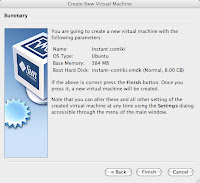 Your VM is now configured and you are shown a summary of the settings that you have made. Click Finish to add it to the list of Virtual Machines. From the list you can start your instant contiki VM by selecting it and clicking the start button in the toolbar.
Your VM is now configured and you are shown a summary of the settings that you have made. Click Finish to add it to the list of Virtual Machines. From the list you can start your instant contiki VM by selecting it and clicking the start button in the toolbar.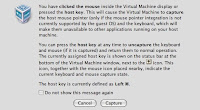 Sometime during the startup process this dialog, which explains how to get your mouse pointer back from the VM, is displayed. By default this is done by pressing the left command button but to avoid frustration be sure to take note of how to do it.
Sometime during the startup process this dialog, which explains how to get your mouse pointer back from the VM, is displayed. By default this is done by pressing the left command button but to avoid frustration be sure to take note of how to do it.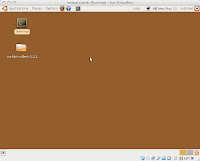 Now you have your instant contiki environment up and running and can start developing software. Note that the username/password for the linux installation is user/user. To learn more about how to use the environment or contiki pleaser refer to the Contiki site.
Now you have your instant contiki environment up and running and can start developing software. Note that the username/password for the linux installation is user/user. To learn more about how to use the environment or contiki pleaser refer to the Contiki site.Supple systems rely on subtle signals; rich human communication and interpretation strategies such as emotion, social ritual, nonverbal communication, and kinesthetic engagement; and emergent dynamics, to provide engaging moment-to-moment experiences. There are two main factors driving the evolution of supple systems. One is the rapid growth of leisure and entertainment use of technologies and the other is the commercial availability of sensor technology for tracking human expression which has lead to an increasing number of systems attempting to use such technology to provide compelling experiences. Successful examples of existing supple systems include the Nintendo WII and Apples iPhone. Designing and building supple systems is challenging because it is an unfamiliar “material” for interaction designers but also because it requires a wide range of competencies. The quality of an experience arises in interaction between users and systems. This interaction is in turn affected by a systems hardware as well as its software, and how well they work together. Even seemingly simple artefacts, such as pulse-meters, require holistic design of specialized hardware, specialized software, and specialized user interfaces to be successful. Each factor is equally important: a problem concerning any one of them can ruin an otherwise great experience.
In this project, we aim to develop a process for rapid, integrated, development of supple systems. We will focus our efforts on building so-called life-style applications, mobile systems that are tightly integrated into our every-day lives, as their often advanced use of technology highlights the challenges for future applications of supple systems – be it in factories, vehicles, or applications on our mobile phones. The systems developed within the project will explore new materials, such as fabric or paper, integrated with sensors and wireless technologies.